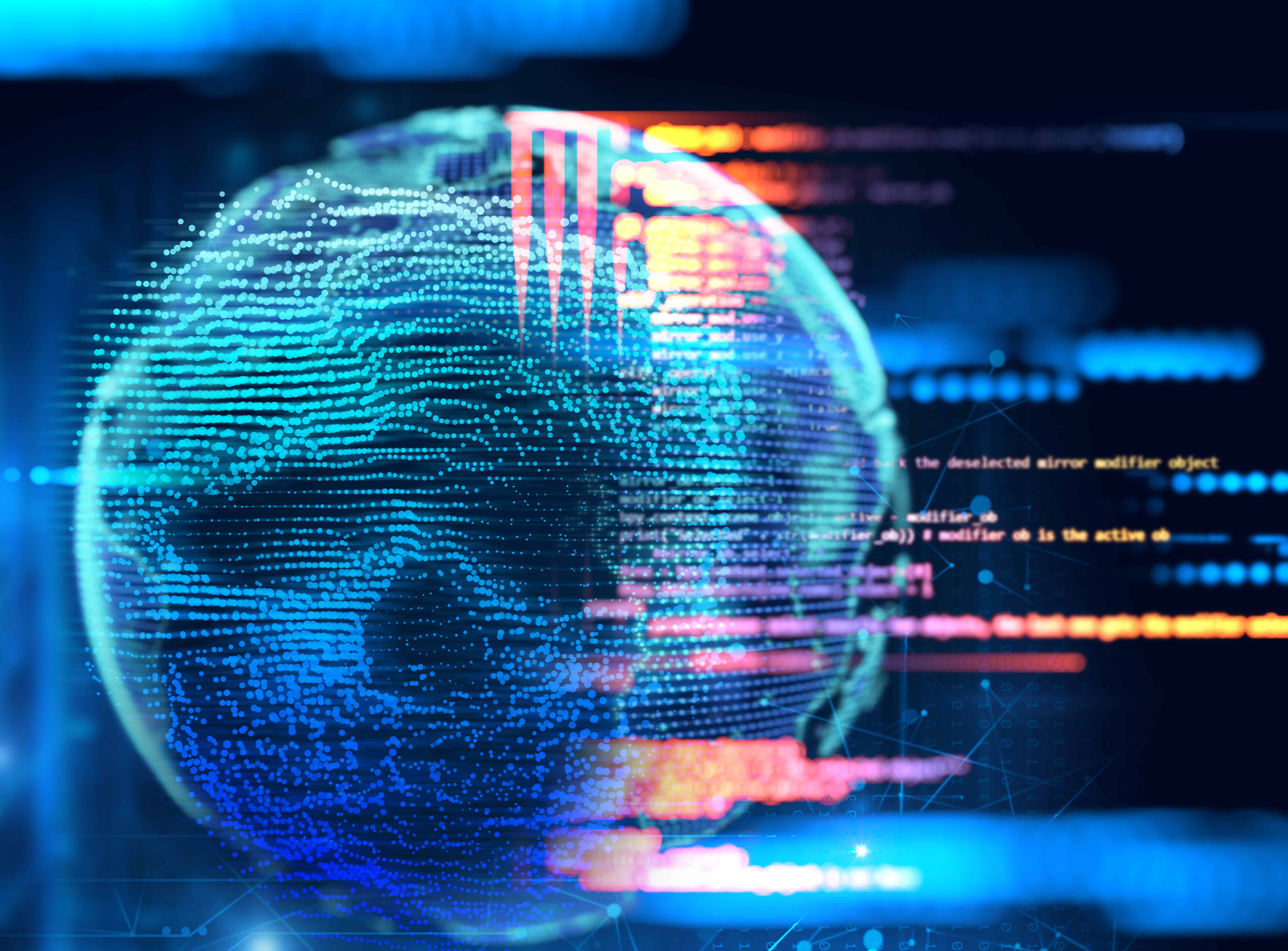Ransomware-as-a-service lowers the bar for entering the entering the cyber extortion game
Ransomware isn’t a new threat. It first rose to prominence back in 2016, when Hollywood Presbyterian Medical Center shelled out $17,000 in bitcoin after an attack took the hospital offline. Since then, ransomware has only become more popular, especially for hackers targeting the healthcare industry or government organizations. Used to be, launching a ransomware attack required at least some technical prowess; at a minimum, hackers had to possess sufficient coding skills to write a ransomware program. Then, ransomware-as-a-service (RaaS) came on the scene and changed the game.

What is ransomware?
Before delving into RaaS, let’s quickly review ransomware. Ransomware is malware that encrypts all or part of a system, rendering it inoperable until a ransom fee, usually demanded in bitcoin, is paid to the hacker, who will then supposedly provide a key to unlock the encryption. As opposed to data breaches, which seek to steal credit card information, Social Security Numbers, and other sensitive data, ransomware doesn’t access files or data. It just locks everything down.
Paying the ransom is a dicey bet. Even after getting the money, hackers may not send a key, or they may send one that doesn’t work, or that doesn’t fully work.
What is ransomware-as-a-service (RaaS)?
At its simplest, RaaS is a criminal offshoot of software-as-a-service (SaaS), the myriad of cloud-hosted software solutions sold by legitimate vendors to both people and businesses. Just like SaaS applications, RaaS is sold on a cloud-based subscription model to anyone who can ante up the subscription fee. In some cases, there is no subscription fee; many RaaS developers use “affiliate” models where the developer collects all of the ransom money extorted by affiliates, takes out some percentage as commission, and passes on the remainder.
While RaaS applications vary in complexity, in general, they are designed to be very easy to use. They’re deployed using online portals with simple user interfaces, and no coding is required. Many enterprising RaaS “vendors” even offer online customer service, just like an SaaS developer would, to help subscribers get their ransomware campaigns up and running.
The dangers of ransomware-as-a-service
The biggest danger of RaaS is that it made it possible for just about anyone to become a cyber extortionist. Undoubtedly, the advent of RaaS contributed greatly to the exponential growth of ransomware attacks.
RaaS gives users all the benefits of a regular ransomware attack, without the hassle of writing their own code. Ransomware took off because it tends to be much more lucrative than data breaches. Once hackers breach a system and steal data, they must procure a buyer and negotiate a price. This can take time, and the data may not be worth as much as the hacker thought it would be. Ransomware and RaaS attacks come with built-in “buyers”: the businesses who are locked out of their systems, who are often not in a position to negotiate on price.
Preventing RaaS attacks
RaaS attacks are launched just like regular ransomware attacks; usually, through a phishing email. The same proactive measures employed to prevent ransomware are also used to prevent RaaS, including:
- Using email filters to prevent phishing emails from reaching employees’ inboxes.
- Using reliable anti-virus programs and other security software.
- Keeping operating systems and application software up to date.
- Educating employees on cybersecurity hygiene, including how to recognize phishing emails and the steps to take if they receive a suspicious email.
Organizations must also regularly back up systems and data so that they can be restored in the event of an RaaS attack, as well as have an incident response plan and business continuity and disaster plans in place. In addition to shielding your organization from some of the fallout of a ransomware attack, these measures will also mitigate the damages from other cyber attacks, real-world crime or vandalism, or a natural disaster.
The cybersecurity experts at Lazarus Alliance have deep knowledge of the cybersecurity field, are continually monitoring the latest information security threats, and are committed to protecting organizations of all sizes from security breaches. Our full-service risk assessment services and Continuum GRC RegTech software will help protect your organization from data breaches, ransomware attacks, and other cyber threats.
Lazarus Alliance is proactive cybersecurity®. Call 1-888-896-7580 to discuss your organization’s cybersecurity needs and find out how we can help your organization adhere to cybersecurity regulations, maintain compliance, and secure your systems.
We’re reaching the end of 2025, and looking ahead to 2026, most experts are discussing the latest threats that will shape the year ahead. This year, we’re seeing a new, but not unexpected, shift to autonomous threats driven by state-sponsored actors and AI. With that in mind, a new generation of threats, broadly known as...Continue reading→
In mid-October 2025, the CISA issued one of its most urgent orders yet: Emergency Directive 26-01. The directive calls on all Federal Civilian Executive Branch (FCEB) agencies to immediately mitigate vulnerabilities in devices from F5 Networks following a state-sponsored breach of F5’s systems and access to portions of BIG-IP source code and vulnerability data. The event...Continue reading→
A recent exploit involving a new AI-focused browser shone a light on a critical problem–namely, that browser security is a constant issue, and AI is just making that threat more pronounced. Attackers discovered a way to use that browser’s memory features to implant hidden instructions inside an AI assistant. Once stored, those instructions triggered unwanted...Continue reading→
When the federal government shuts down, the public sees closed monuments, unpaid workers, and halted programs. What they do not see is the silent surge of cyberattacks targeting agencies already operating on fumes. During the most recent shutdown, attacks against U.S. government systems spiked by nearly 85%. Cybersecurity failures during government disruptions rarely start with...Continue reading→
The world of cyber threats is rapidly evolving, and while we can see these changes more generally, it’s always crucial to understand them concretely. As the 2025 CrowdStrike Global Threat Report shows us, the landscape of our industry is changing. We’re digging into this report to discuss a challenging trend: the move of hackers foregoing...Continue reading→
The increasing adoption of AI by businesses introduces security risks that current cybersecurity frameworks are not prepared to address. A particularly complex emerging threat is prompt injection attacks. These attacks manipulate the integrity of large language models and other AI systems, potentially compromising security protocols and legal compliance. Organizations adopting AI must have a plan...Continue reading→
The ink has barely dried on the CMMC final rule, and already the defense contracting community is buzzing with speculation about what comes next. Just when contractors thought they had a moment to catch their breath after years of regulatory limbo, whispers of CMMC 3.0 have begun circulating through the industry. But is this just...Continue reading→
As the traditional network boundary dissolves and remote work becomes standard practice, identities are the major frontier for security. Whether we’re talking about human users, service accounts, or machine identities, these have emerged as both the primary access mechanism and the most targeted attack vector. It has become imperative for providers to centralize identity management...Continue reading→
FedRAMP provides a standardized approach to security assessment, authorization, and continuous monitoring for cloud products and services used by federal agencies. While the program’s rigorous baseline requirements ensure consistent security, the reality is that this consistency calls for a little flexibility. This is where deviation requests and significant change requests come into play. These two...Continue reading→
Data is possibly one of the most valuable assets any organization holds. Customer information, employee records, and proprietary business intelligence present challenges because the data flowing through modern enterprises represents both significant opportunities and serious risks. Businesses face a challenging balance: investing in compliance measures to protect sensitive information while also preparing for the real...Continue reading→















